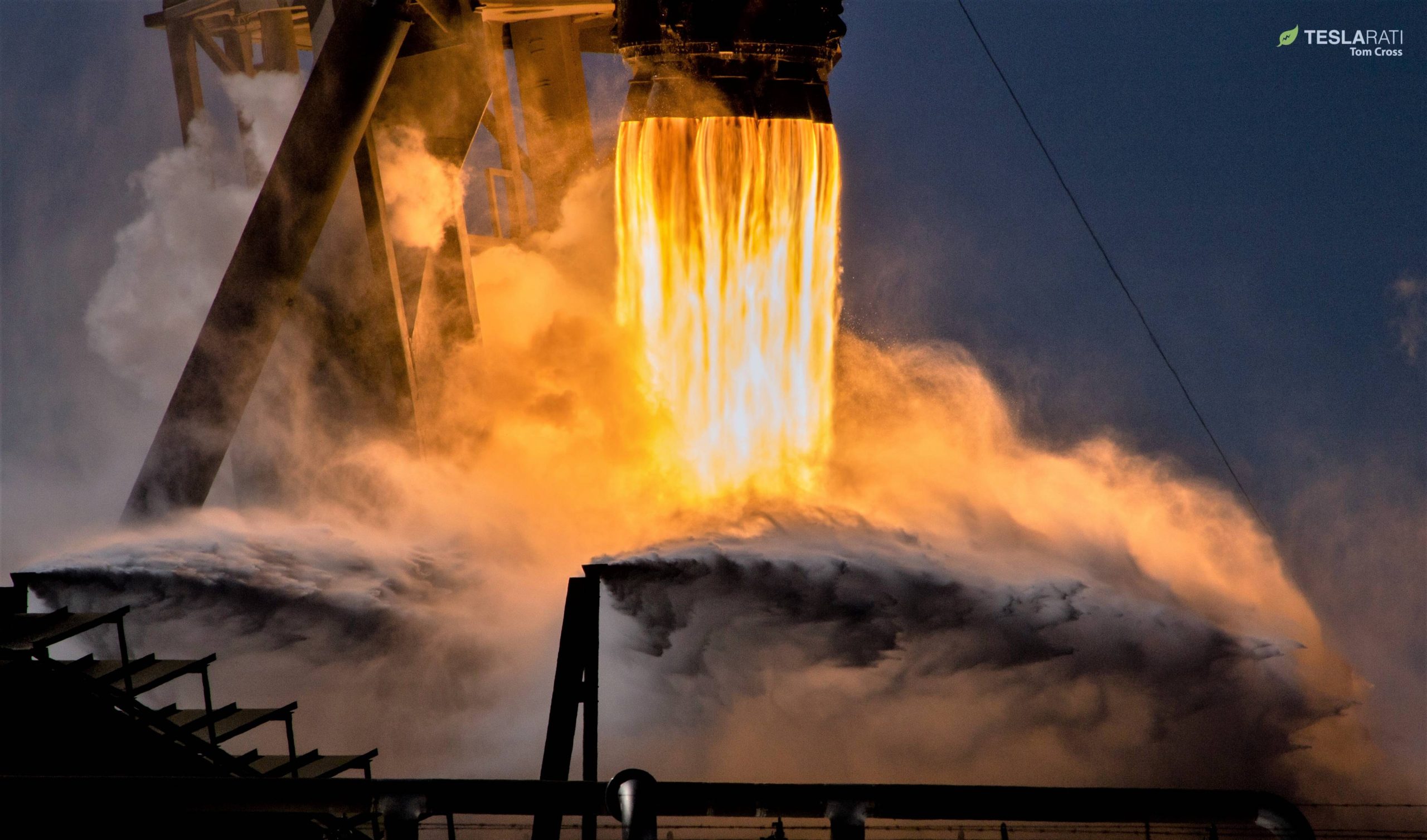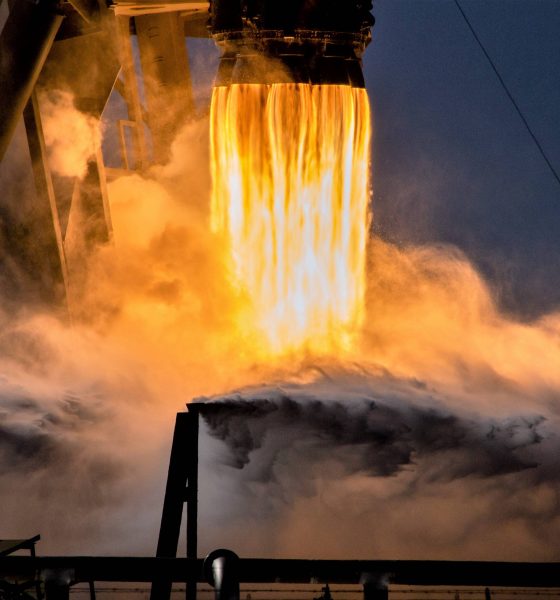

News
SpaceX set to launch reused Dragon on a new Falcon 9 as NASA requests delay
An electrical fault aboard the International Space Station (ISS) has forced NASA to delay SpaceX’s CRS-17 Cargo Dragon launch from May 1st to May 3rd, giving the station’s crew more time to fix the issues at hand.
A new Falcon 9 Block 5 booster is tasked with launching the spacecraft and completed a static fire test at SpaceX’s LC-40 pad on April 27th. The Cargo Dragon capsule, however, completed its first orbital resupply mission (CRS-12) in September 2017 and has since been refurbished for a second launch. After CRS-17, three launches remain on SpaceX’s CRS1 NASA contract between now and early 2020, after which Dragon 2 (i.e. Crew Dragon) is expected to take over. However, a recent failure during a Crew Dragon test have thrown those plans into question.
Cargo Dragon’s 17th mission
Known as C113, the CRS-12 capsule is the last Dragon 1 manufactured by SpaceX, leaving a fleet of five flight-proven spacecraft for SpaceX to complete the eight remaining ISS resupply missions under its Commercial Resupply Services 1 (CRS1) contract. CRS-17 is the latest installment in SpaceX’s ISS resupply saga and is manifested with ~2500 kg (5500 lb) of cargo.
Along for the ride are NASA’s Orbiting Carbon Observatory-3 (OCO-3) and the multi-experiment STP-H6 investigation, two large pieces of hardware that will be delivered to the ISS in Dragon’s unpressurized trunk. After being berthed to the ISS, astronauts will unpack dozens of packages stored inside Cargo Dragon’s cabin. Sometime later, the station’s Canadarm2 will be used to grab OCO-3 and STP-H6 and install each on the outside of the space station, where they will hopefully live long and scientifically fruitful lives.
SpaceX and NASA have assigned a new Falcon 9 Block 5 booster – likely B1056 – to launch CRS-17. To preserve the scene of Crew Dragon C201’s April 20th explosion, the booster will attempt to land around 20 miles (32 km) offshore aboard drone ship Of Course I Still Love You (OCISLY). Originally scheduled for April 25th, CRS-17 was delayed to the 26th, 30th, 1st, and now May 3rd, most of which were requested by NASA for ISS scheduling purposes.
The latest delay – from May 1st to no earlier than (NET) May 3rd – was triggered by an unexpected electrical fault aboard the ISS, cutting the redundancy of its Canadarm2 (SSRMS) control systems from two strings to one. In other words, Canadarm2 – used to ‘grapple’ and berth spacecraft like Cargo Dragon and Cygnus to the station – is now just one electrical fault away from being rendered inoperable. CRS-17 will stay grounded until two-string (i.e. single fault) redundancy is returned to Canadarm2 and additional impacted systems.
In the event that ISS astronauts and NASA ground control are able to repair the electrical systems in a timely fashion, CRS-17 is scheduled to launch at 3:11 am EDT (07:11 UTC) on May 3rd.

In the shadow of Crew Dragon
A recent catastrophic failure of Crew Dragon (i.e. Dragon 2) raises serious questions about SpaceX’s follow-up CRS2 contract, but the nominal plan involves retiring Dragon 1 after CRS-20 and flying all future cargo missions with flight-proven Crew Dragon spacecraft. In the likely event that Crew Dragon C201’s failure delays SpaceX’s CRS2 schedule by several months, there are contingency plans to continue flying refurbished Dragon 1 spacecraft.
However, each Dragon 1 was designed for a maximum of three orbital missions, meaning that SpaceX’s current capsule fleet can support no more than six additional resupply missions before they reach the end of their usable lifespans. SpaceX thus has two potential buffer missions – CRS-21 and CRS-22 – that could theoretically account for up to a year of Dragon 2 delays. Beyond that, additional Dragon 2 delays could create a gap where NASA would have to supply the ISS without SpaceX’s services.
In a best-case scenario, SpaceX and NASA will quickly uncover an unequivocal culprit of C201’s catastrophic explosion, fix the technical and organizational failures that allowed it to happen, and be back on their feet in no time. In reality, it’s likely that the failure will delay future Crew Dragon (and thus Dragon 2) launches by a minimum of 6-12 months. SpaceX will likely need to change up the launch order of its capsules, reassigning DM-2’s Crew Dragon to the in-flight abort (IFA) test and the US Crew Vehicle 1 (USCV-1) Crew Dragon to SpaceX’s first crewed demonstration mission (DM-2). After such a serious and potentially fatal failure, it’s even possible that NASA will require an additional uncrewed orbital launch before permitting SpaceX to fly astronauts on Crew Dragon.
Given that SpaceX’s nominal CRS2 plan involved lightly modifying and reusing Dragon 2s after crewed missions, the future (and schedule) of the company’s Cargo and Crew contracts are intimately intertwined. With any luck, SpaceX and NASA will be able to solve the technical, organizational, and logistical problems now facing them and ensure a stable future for Dragon 2. In the meantime, Cargo Dragon’s CRS-17 mission offers SpaceX a chance to partially verify that Cargo Dragon C201’s issues are are relegated to Dragon 2 and Dragon 2 alone.
Check out Teslarati’s Marketplace! We offer Tesla accessories, including for the Tesla Cybertruck and Tesla Model 3.

Elon Musk
Tesla’s Elon Musk: 10 billion miles needed for safe Unsupervised FSD
As per the CEO, roughly 10 billion miles of training data are required due to reality’s “super long tail of complexity.”

Tesla CEO Elon Musk has provided an updated estimate for the training data needed to achieve truly safe unsupervised Full Self-Driving (FSD).
As per the CEO, roughly 10 billion miles of training data are required due to reality’s “super long tail of complexity.”
10 billion miles of training data
Musk comment came as a reply to Apple and Rivian alum Paul Beisel, who posted an analysis on X about the gap between tech demonstrations and real-world products. In his post, Beisel highlighted Tesla’s data-driven lead in autonomy, and he also argued that it would not be easy for rivals to become a legitimate competitor to FSD quickly.
“The notion that someone can ‘catch up’ to this problem primarily through simulation and limited on-road exposure strikes me as deeply naive. This is not a demo problem. It is a scale, data, and iteration problem— and Tesla is already far, far down that road while others are just getting started,” Beisel wrote.
Musk responded to Beisel’s post, stating that “Roughly 10 billion miles of training data is needed to achieve safe unsupervised self-driving. Reality has a super long tail of complexity.” This is quite interesting considering that in his Master Plan Part Deux, Elon Musk estimated that worldwide regulatory approval for autonomous driving would require around 6 billion miles.
FSD’s total training miles
As 2025 came to a close, Tesla community members observed that FSD was already nearing 7 billion miles driven, with over 2.5 billion miles being from inner city roads. The 7-billion-mile mark was passed just a few days later. This suggests that Tesla is likely the company today with the most training data for its autonomous driving program.
The difficulties of achieving autonomy were referenced by Elon Musk recently, when he commented on Nvidia’s Alpamayo program. As per Musk, “they will find that it’s easy to get to 99% and then super hard to solve the long tail of the distribution.” These sentiments were echoed by Tesla VP for AI software Ashok Elluswamy, who also noted on X that “the long tail is sooo long, that most people can’t grasp it.”
News
Tesla earns top honors at MotorTrend’s SDV Innovator Awards
MotorTrend’s SDV Awards were presented during CES 2026 in Las Vegas.

Tesla emerged as one of the most recognized automakers at MotorTrend’s 2026 Software-Defined Vehicle (SDV) Innovator Awards.
As could be seen in a press release from the publication, two key Tesla employees were honored for their work on AI, autonomy, and vehicle software. MotorTrend’s SDV Awards were presented during CES 2026 in Las Vegas.
Tesla leaders and engineers recognized
The fourth annual SDV Innovator Awards celebrate pioneers and experts who are pushing the automotive industry deeper into software-driven development. Among the most notable honorees for this year was Ashok Elluswamy, Tesla’s Vice President of AI Software, who received a Pioneer Award for his role in advancing artificial intelligence and autonomy across the company’s vehicle lineup.
Tesla also secured recognition in the Expert category, with Lawson Fulton, a staff Autopilot machine learning engineer, honored for his contributions to Tesla’s driver-assistance and autonomous systems.
Tesla’s software-first strategy
While automakers like General Motors, Ford, and Rivian also received recognition, Tesla’s multiple awards stood out given the company’s outsized role in popularizing software-defined vehicles over the past decade. From frequent OTA updates to its data-driven approach to autonomy, Tesla has consistently treated vehicles as evolving software platforms rather than static products.
This has made Tesla’s vehicles very unique in their respective sectors, as they are arguably the only cars that objectively get better over time. This is especially true for vehicles that are loaded with the company’s Full Self-Driving system, which are getting progressively more intelligent and autonomous over time. The majority of Tesla’s updates to its vehicles are free as well, which is very much appreciated by customers worldwide.
Elon Musk
Judge clears path for Elon Musk’s OpenAI lawsuit to go before a jury
The decision maintains Musk’s claims that OpenAI’s shift toward a for-profit structure violated early assurances made to him as a co-founder.

A U.S. judge has ruled that Elon Musk’s lawsuit accusing OpenAI of abandoning its founding nonprofit mission can proceed to a jury trial.
The decision maintains Musk’s claims that OpenAI’s shift toward a for-profit structure violated early assurances made to him as a co-founder. These claims are directly opposed by OpenAI.
Judge says disputed facts warrant a trial
At a hearing in Oakland, U.S. District Judge Yvonne Gonzalez Rogers stated that there was “plenty of evidence” suggesting that OpenAI leaders had promised that the organization’s original nonprofit structure would be maintained. She ruled that those disputed facts should be evaluated by a jury at a trial in March rather than decided by the court at this stage, as noted in a Reuters report.
Musk helped co-found OpenAI in 2015 but left the organization in 2018. In his lawsuit, he argued that he contributed roughly $38 million, or about 60% of OpenAI’s early funding, based on assurances that the company would remain a nonprofit dedicated to the public benefit. He is seeking unspecified monetary damages tied to what he describes as “ill-gotten gains.”
OpenAI, however, has repeatedly rejected Musk’s allegations. The company has stated that Musk’s claims were baseless and part of a pattern of harassment.
Rivalries and Microsoft ties
The case unfolds against the backdrop of intensifying competition in generative artificial intelligence. Musk now runs xAI, whose Grok chatbot competes directly with OpenAI’s flagship ChatGPT. OpenAI has argued that Musk is a frustrated commercial rival who is simply attempting to slow down a market leader.
The lawsuit also names Microsoft as a defendant, citing its multibillion-dollar partnerships with OpenAI. Microsoft has urged the court to dismiss the claims against it, arguing there is no evidence it aided or abetted any alleged misconduct. Lawyers for OpenAI have also pushed for the case to be thrown out, claiming that Musk failed to show sufficient factual basis for claims such as fraud and breach of contract.
Judge Gonzalez Rogers, however, declined to end the case at this stage, noting that a jury would also need to consider whether Musk filed the lawsuit within the applicable statute of limitations. Still, the dispute between Elon Musk and OpenAI is now headed for a high-profile jury trial in the coming months.











